Dr. F. Went noted that if coleoptile tips were removed and placed on agar for one hour, the agar would produce a bending when placed on one side of freshly-cut coleoptile stumps. Of what significance is this experiment?
It demonstrated polar movement of auxins.
It made possible the isolation and exact identification of auxin.
It is the basis for quantitative determination of small amounts of growth-promoting substances.
It supports the hypothesis that IAA is auxia.
The correct Answer is:B
Knowledge Check
- Question 1 - Select One
Dr. F. Went noted that is coleoptile tips were removed and placed on agar for one hour , the agar would produce a bending when placed on one side of freshly cut coleoptile stumps .Of what sighifcance is this exeriment
AIt supports the hypotheses that IAA is auxinBit demontrated polar movement of auinsCIt made posible the isolation and exact identification os auxinDIt is the basis for quantitative determation of small amounts of growth -promoting substances - Question 1 - Select One
Two blocks of Agare 1 and 2 were kept in the positions hown in the diagram below for several hours and then transferred into tweo freshly cut coleoptiles
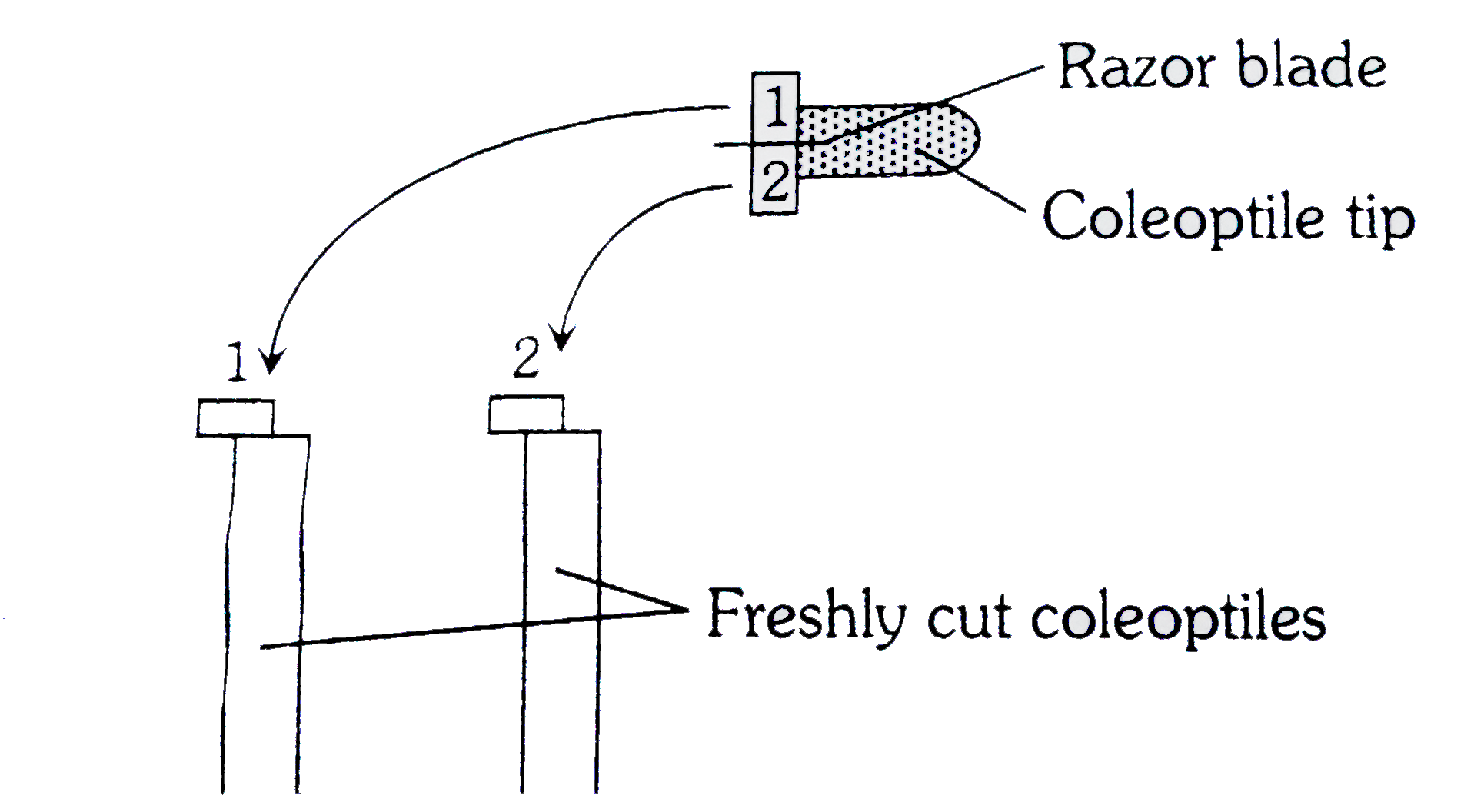
After two days of growth of the following would resultA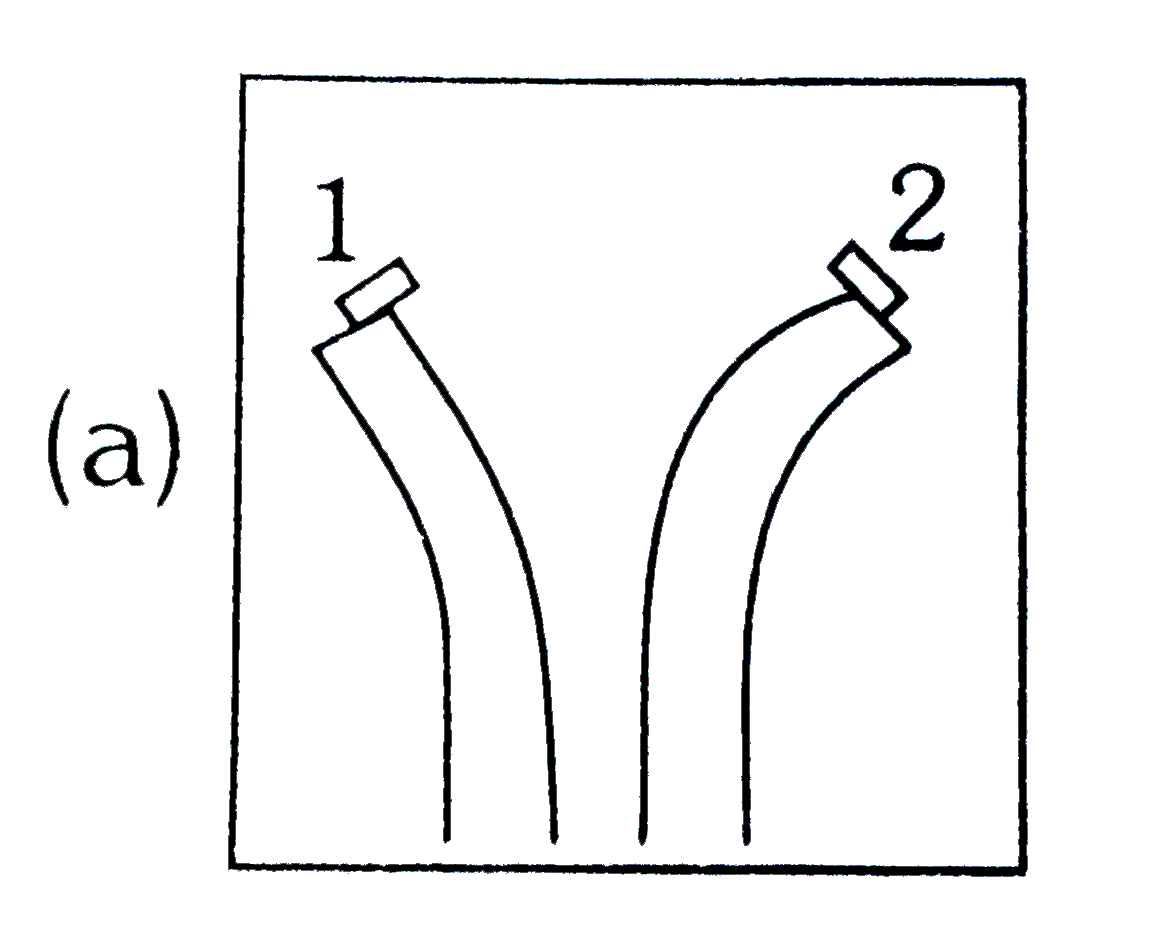 B
B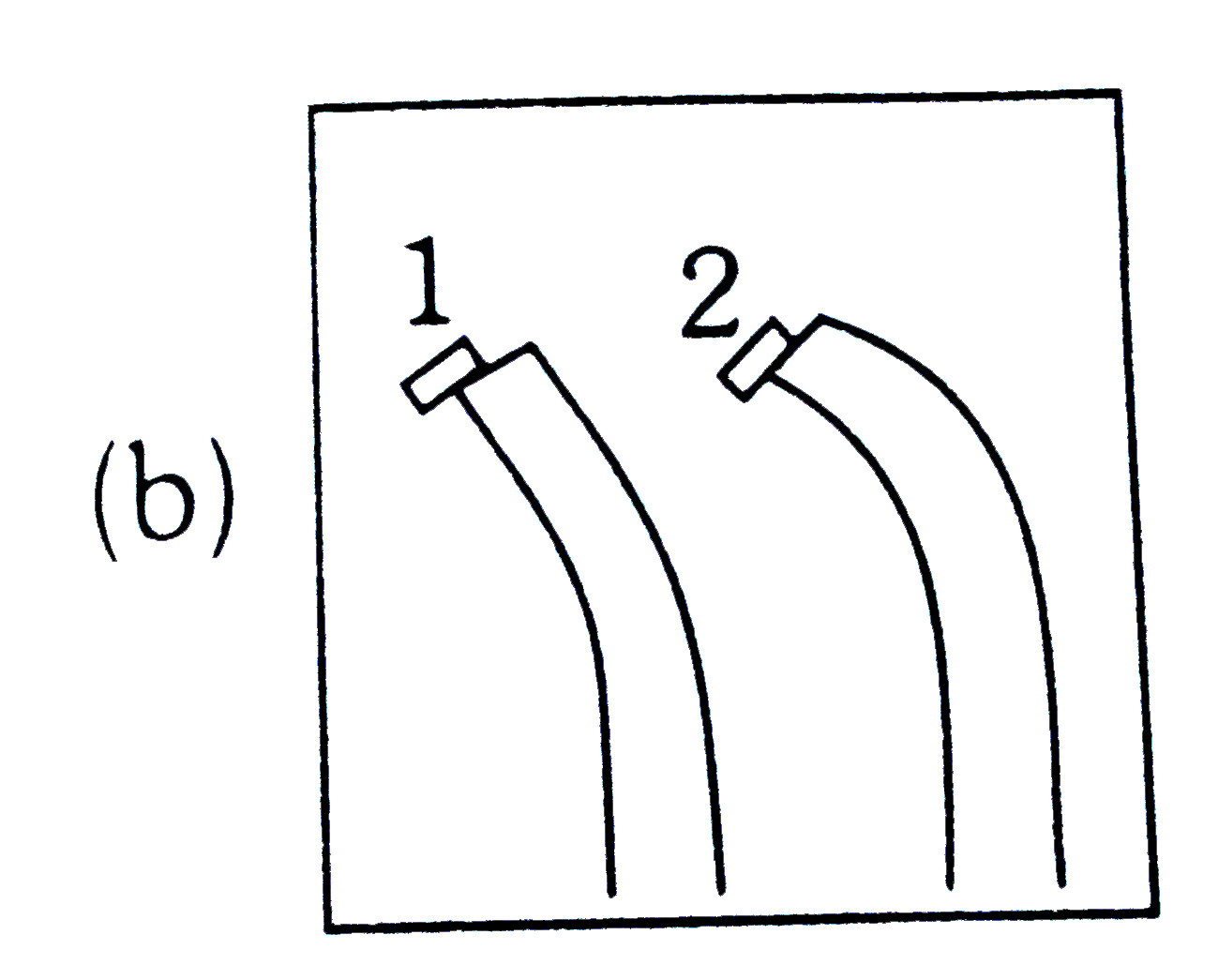 C
C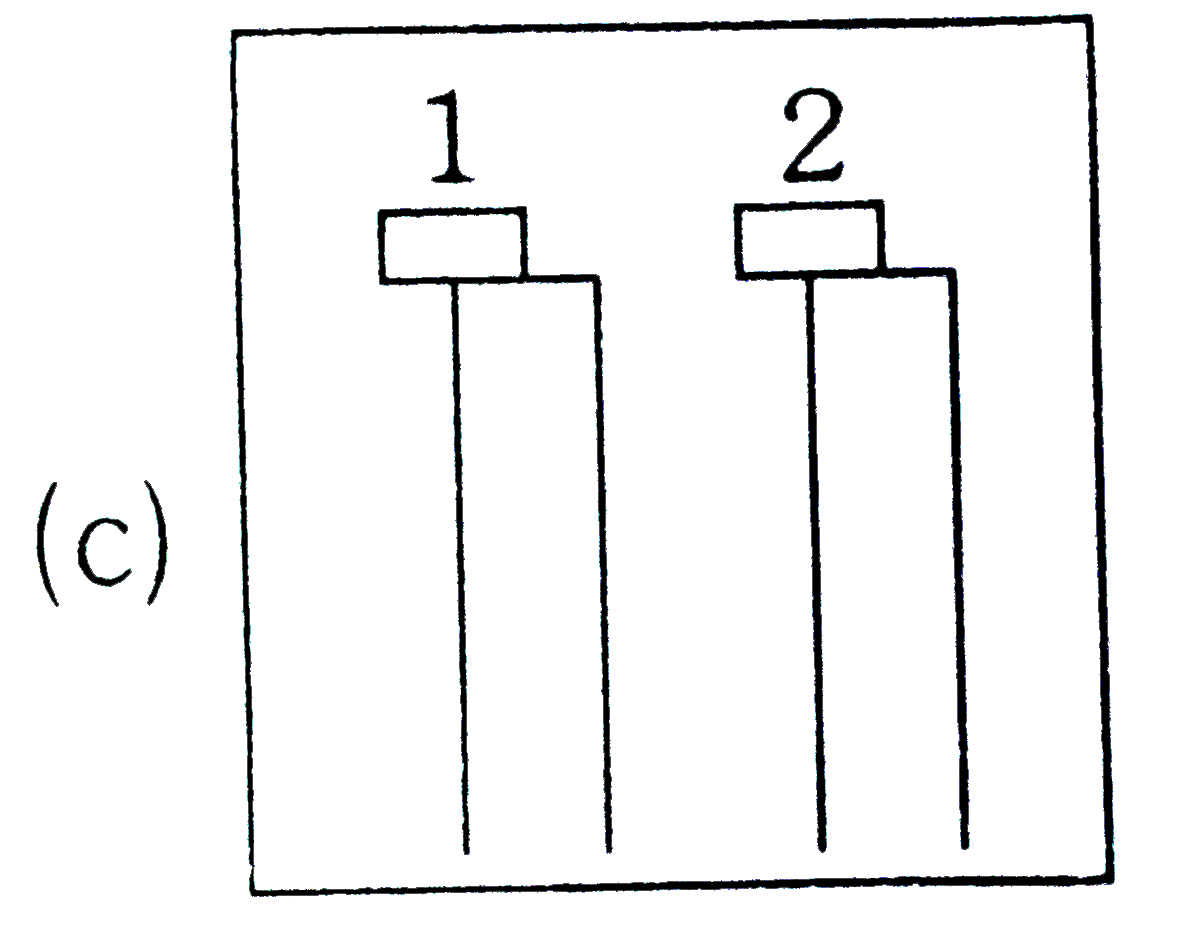 D
D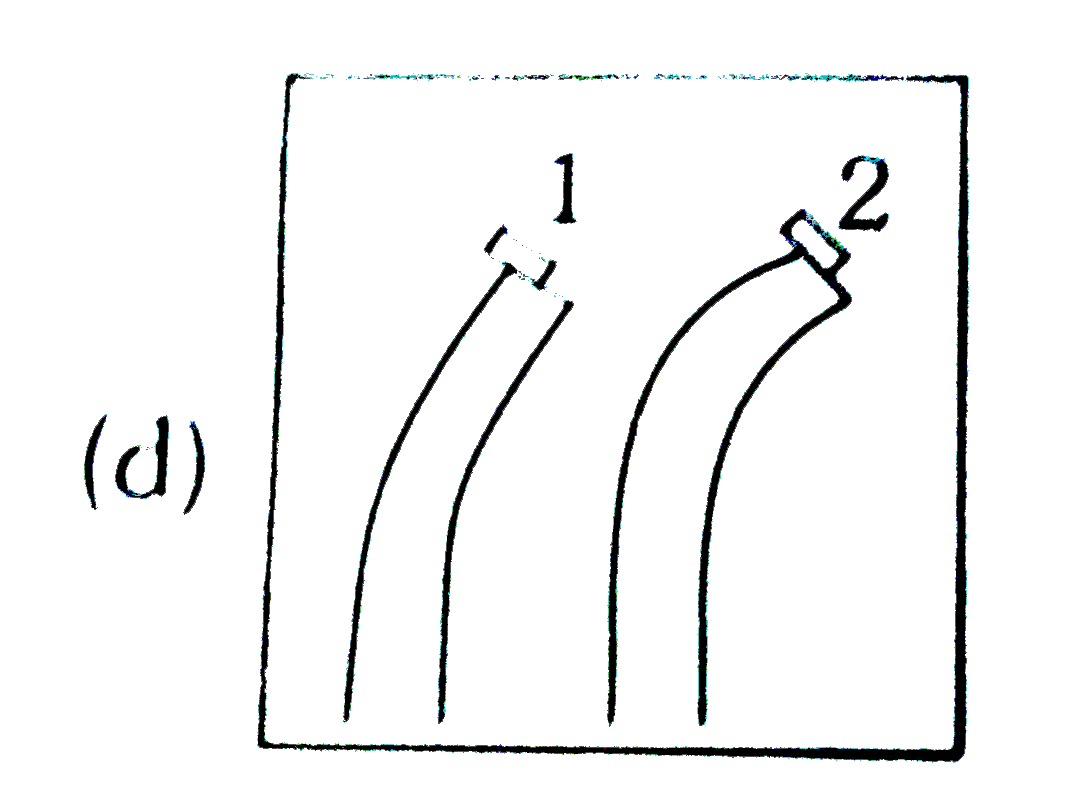
- Question 1 - Select One
Two blocks of Agare 1 and 2 were kept in the positions hown in the diagram below for several hours and then transferred into tweo freshly cut coleoptiles

After two days of growth of the following would resultA B
B C
C D
D
- Question 1 - Select One
Comprehension:
Read the passage and answer the questions that follow.
The methods of embalming, or treating the dead body, that the ancient Egyptians used is called 'mummification'. Using special processes, the Egyptians removed all moisture from the body, leaving only a dried form that would not easily decay. It was important in their religion to preserve the dead body in as life like a manner as possible. The mummification process took seventy days. Special priests worked as embalmers, treating and wrapping the body. Beyond knowing the correct rituals and prayers to be performed at various stages, the priests also needed a detailed knowledge of human anatomy. The first step in the process was the removal of all internal parts that might decay rapidly. The brain was removed by carefully inserting special hooked instruments up through the nostrils in order to pull out bits of brain tissue. The embalmers then removed the organs of the abdomen and chest through a cut usually made on the left side of the abdomen. They left only the heart in place, believing it to be the center of a person's being and intelligence, The other organs were preserved separately, with the stomach, liver, lungs and intestines placed in special boxes or jars, today called 'canopic jars'. These were buried with the mummy. The embalmers next removed all moisture from the body. This they did by covering the body with 'natron, a type of salt which has great drying properties, and by placing additional natron packets inside the body. When the body had dried out completely, embalmers removed the internal packets and lightly washed the natron off the body. The result was a very dried-out but recognizable human form. To make the mummy seem even more life like, sunken areas of the body were filled out with linen and other materials and false eyes were added. Next the wrapping began. Each mummy needed hundreds of yards of linen. The priests carefully wound the long strips of linen around the body, sometimes even wrapping each finger and toe separately before wrapping the entire hand or foot. In order to protect the dead from mishap in after life, amulets were placed among the wrappings and prayers and magical words written on some of the linen strips. Often the priests placed a mask of the person's face between the layers of head bandages. At last the priests wrapped the final cloth or shroud in place and secured it with linen strips. The mummy was complete. It was then placed in the tomb along with food, furniture, vessels, perfumes, jewels and other things required in the afterlife.
SubQuestion No: 35
Hooked instuments were insterted through the nostrils to extact the:AlungsBbrainCheartDliver - Question 1 - Select One
Comprehension:
Read the passage and answer the questions that follow.
The methods of embalming, or treating the dead body, that the ancient Egyptians used is called 'mummification'. Using special processes, the Egyptians removed all moisture from the body, leaving only a dried form that would not easily decay. It was important in their religion to preserve the dead body in as life like a manner as possible. The mummification process took seventy days. Special priests worked as embalmers, treating and wrapping the body. Beyond knowing the correct rituals and prayers to be performed at various stages, the priests also needed a detailed knowledge of human anatomy. The first step in the process was the removal of all internal parts that might decay rapidly. The brain was removed by carefully inserting special hooked instruments up through the nostrils in order to pull out bits of brain tissue. The embalmers then removed the organs of the abdomen and chest through a cut usually made on the left side of the abdomen. They left only the heart in place, believing it to be the center of a person's being and intelligence. The other organs were preserved separately, with the stomach, liver, lungs and intestines placed in special boxes or jars, today called 'canopic jars'. These were buried with the mummy. The embalmers next removed all moisture from the body. This they did by covering the body with 'natron', a type of salt which has great drying properties, and by placing additional natron packets inside the body. When the body had dried out completely, embalmers removed the internal packets and lightly washed the natron off the body. The result was a very dried-out but recognizable human form. To make the mummy seem even more life like, sunken areas of the body were filled out with linen and other materials and false eyes were added. Next the wrapping began. Each mummy needed hundreds of yards of linen. The priests carefully wound the long strips of linen around the body, sometimes even wrapping each finger and toe separately before wrapping the entire hand or foot. In order to protect the dead from mishapin after life, amulets were placed among the wrappings and prayers and magical words written on some of the linen strips. Often the priests placed a mask of the person's face between the layers of head bandages. At last the priests wrapped the final cloth or shroud in place and secured it with linen strips. The mummy was complete. It was then placed in the tomb along with food, furniture, vessels, perfumes, jewels and other things required in the afterlife.
SubQuestion No : 32
What was the initial step in the process of mummification?APlacing a face mask between the head bandagesBWrapping the body with strips of linenCCompletely drying the bodyDRemoval of the internal parts - Question 1 - Select One
Comprehension:
Read the passage and answer the questions that follow.
The methods of embalming, or treating the dead body, that the ancient Egyptians used is called 'mummification'. Using special processes, the Egyptians removed all moisture from the body, leaving only a dried form that would not easily decay. It was important in their religion to preserve the dead body in as life like a manner as possible. The mummification process took seventy days. Special priests worked as embalmers, treating and wrapping the body, Beyond knowing the correct rituals and prayers to be performed at various stages, the priests also needed a detailed knowledge of human anatomy. The first step in the process was the removal of all internal parts that might decay rapidly. The brain was removed by carefully inserting special hooked instruments up through the nostrils in order to pull out bits of brain tissue. The embalmers then removed the organs of the abdomen and chest through a cut usually made on the left side of the abdomen. They left only the heart in place, believing it to be the center of a person's being and intelligence, The other organs were preserved separately, with the stomach, liver, lungs and intestines placed in special boxes or jars, today called 'canopic jars'. These were buried with the mummy. The embalmers next removed all moisture from the body. This they did by covering the body with 'natron', a type of salt which has great drying properties, and by placing additional natron packets inside the body. When the body had dried out completely, embalmers removed the internal packets and lightly washed the natron off the body. The result was a very dried-out but recognizable human form. To make the mummy seem even more life like, sunken areas of the body were filled out with linen and other materials and false eyes were added. Next the wrapping began. Each mummy needed hundreds of yards of linen. The priests carefully wound the long strips of linen around the body, sometimes even wrapping each finger and toe separately before wrapping the entire hand or foot. In order to protect the dead from mishap in after life, amulets were placed among the wrappings and prayers and magical words written on some of the linen strips. Often the priests placed a mask of the person's face between the layers of head bandages. At last the priests wrapped the final cloth or shroud in place and secured it with linen strips. The mummy was complete. It was then placed in the tomb along with food, furniture, vessels, perfumes, jewels and other things required in the afterlife.
SubQuestion No : 33
Why was the knowledge of anatomy important for the priests?Aa) To remove internal organs from the bodyBTo place natron packets in the bodyCTo wrap each part of the bodyDTo delay the decay of the body for seventy days - Question 1 - Select One
Comprehension:
Read the passage and answer the questions that follow.
The methods of embalming, or treating the dead body, that the ancient Egyptians used is called 'mummification'. Using special processes, the Egyptians removed all moisture from the body, leaving only a dried form that would not easily decay. It was important in their religion to preserve the dead body in as life like a manner as possible. The mummification process took seventy days. Special priests worked as embalmers. treating and wrapping the body. Beyond knowing the correct rituals and prayers to be performed at various stages, the priests also needed a detailed knowledge of human anatomy. The first step in the process was the removal of all internal parts that might decay rapidly. The brain was removed by carefully inserting special hooked instruments up through the nostrils in order to pull out bits of brain tissue. The embalmers then removed the organs of the abdomen and chest through a cut usually made on the left side of the abdomen. They left only the heart in place, believing it to be the center of a person's being and intelligence, The other organs were preserved separately, with the stomach, liver, lungs and intestines placed in special boxes or jars, today called 'canopic jars'. These were buried with the mummy. The embalmers next removed all moisture from the body. This they did by covering the body with 'natron', a type of salt which has great drying properties, and by placing additional natron packets inside the body. When the body had dried out completely, embalmers removed the internal packets and lightly washed the natron off the body. The result was a very dried-out but recognizable human form. To make the mummy seem even more life-like, sunken areas of the body were filled out with linen and other materials and false eyes were added. Next the wrapping began. Each mummy needed hundreds of yards of linen. The priests carefully wound the long strips of linen around the body, sometimes even wrapping each finger and toe separately before wrapping the entire hand or foot. In order to protect the dead from mishap in after life, amulets were placed among the wrappings and prayers and magical words written on some of the linen strips. Often the priests placed a mask of the person's face between the layers of head bandages. At last the priests wrapped the final cloth or shroud in place and secured it with linen strips. The mummy was complete. It was then placed in the tomb along with food, furniture, vessels, perfumes, jewels and other things required in the afterlife.
SubQuestion No : 31
Mummification was done to:Astudy the cause of deathBpreserve dead bodies in a life-like mannerCperform rituals and prayersDtest the drying properties of natron
Similar Questions
Dr. F. Went noted that if coleoptile tips were removed and placed on agar for one hour , the agar would produce a bending when placed on one side of freshly cut coleoptile stumps .Of what sighifcance is this exeriment
View SolutionDr. F. Went noted that is coleoptile tips were removed and placed on agar for one hour , the agar would produce a bending when placed on one side of freshly cut coleoptile stumps what is the significance of this experiment
View SolutionWhat was the reason of the shoot tip showing growth when coleoptile tipes were removed and agar block was kept?
View Solution

